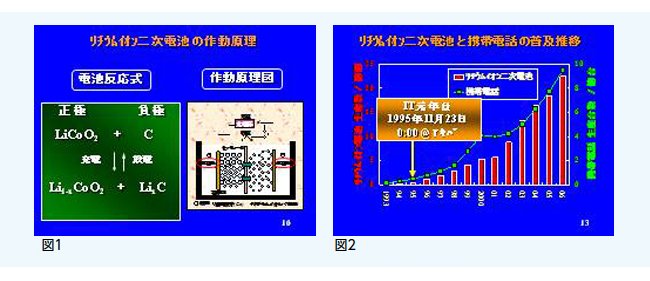What will happen in 2025?
See the graph below (Figure 2).This is a combination of the growth in sales of IT equipment such as mobile phones and personal computers and the growth in the spread of lithium-ion batteries. The IT revolution that began in 1995 with the announcement of Windows 95.It was the lithium-ion secondary battery that supported it.

The major changes in science and technology after the war first took place around 1964, when the Tokyo Olympics were held.It is a material revolution by industrial chemistry.Next is the IT revolution 30 years later, and from this time on, the basis of your life in a sense has been formed.
If history repeats itself, the next big change will occur around 30, 2025 years later.It was just around the time when you were at the forefront of society.The signal from there may still be very faint, but when and how to catch it will be a big issue for you in the future.
Even if a major change occurs once every 30 years, the signs will gradually appear from about 15 years ago.In the case of lithium-ion batteries, the theoretical background leads to the "Frontier Orbital Theory" by Professor Kenichi Fukui (1964-1918) in 1998. * 3.It was in 1981 that Professor Fukui received the Nobel Prize.Shortly before that, in 1977, Professor Hideki Shirakawa (1936-), who also won the Nobel Prize, discovered a material called polyacetylene, which gave a great hint to the positive electrode material of lithium-ion batteries.In 2, JB Goodenough discovered the lithium-ion-containing metal oxide LiCoO1980 (lithium cobalt oxide), which was finally used as a positive electrode material, both in 1995 years prior to 15. Not long ago.
At that time, I was once told by a consumer electronics manufacturer who was developing a video camera. "The development of the parts that hit the face and brain of the video camera (LCD and LSI) is progressing, but the development of the secondary battery that hits the heart is delayed, isn't it?"At that time, I was having a conversation like this. "The light bulbs, vinyl records and nickel-cadmium batteries that have been used since Edison's time will all change in the near future."Basic research on lithium-ion secondary batteries was completed in 1985, and commercialization began in 1992.
